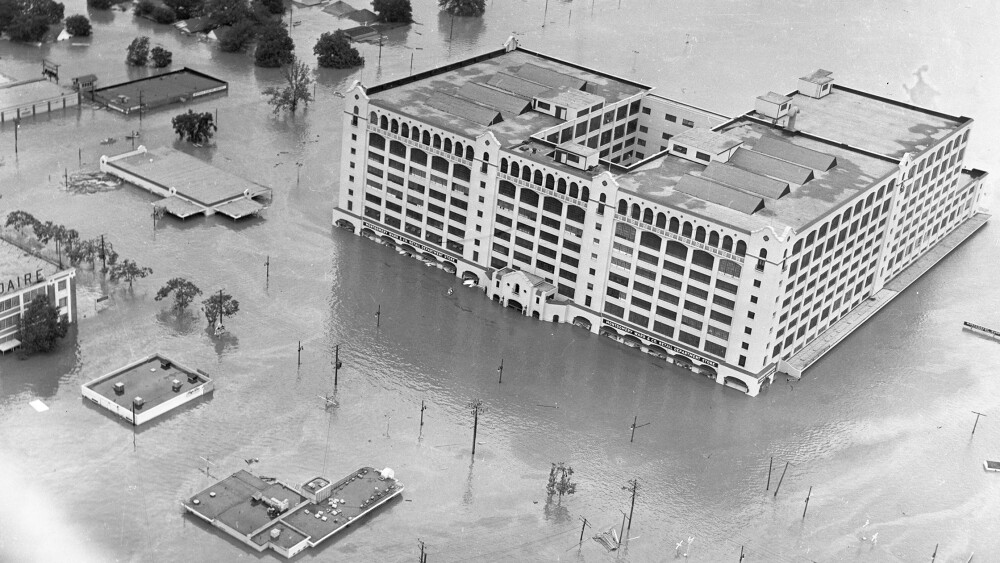Panther City loves to tell old tales, and we have several historic landmarks with legendary stories that are part of our city’s culture and embedded in our everyday lives.
For example, if you’re sitting in traffic on West Seventh, looking out the window to the north, you’re actually staring at nearly 100 years of history.
We’re walking back in time with one of Cowtown’s most iconic everyday buildings: Montgomery Plaza.
Way back when 🕰
In 1928, retail and mail-order company Montgomery Ward built one of its nine regional centers on West Seventh Street near the Trinity River.
Constructed by Thomas Sneed Byrne — now Byrne Construction Services — the eight-story, U-shaped building was Mission Revival style with a curved parapet and arching windows.
The two towers were split down the middle with a rail line to allow trains to be unloaded directly into the warehouse, but the facade was one solid block.

As one of the tallest buildings in the neighborhood, Montgomery Plaza rose out of the floodwaters.
Photo by Squire Haskins Photography, Inc., courtesy of the University of Texas at Arlington Libraries.
In 1949, 11 inches of rain fell in Fort Worth, overflowing the Trinity River and flooding most of the town. Flood waters rose to the second floor of the building.
Montgomery Ward filed for bankruptcy in 2001 and the property was left vacant.
Renovation + reopening 🏗
In 2004, KIMCO Realty and Weber & Co. began to redevelop the property, cutting a six-story hole through the front facade, and creating the M-shaped profile we see today.
The developers opened an 80-ft bricked promenade through the center for outdoor dining and parking.
Back to the future 🛍
Now, the property includes retail on the ground floor with 240 luxury residential condominiums above. The seventh and eighth floors still connect the two halves of the building and the 1-acre resort-style rooftop deck is one of the largest in Texas.
Check out what retail and restaurant tenants are currently housed in the Fort Worth landmark or peruse available condos for a chance to live in history.











